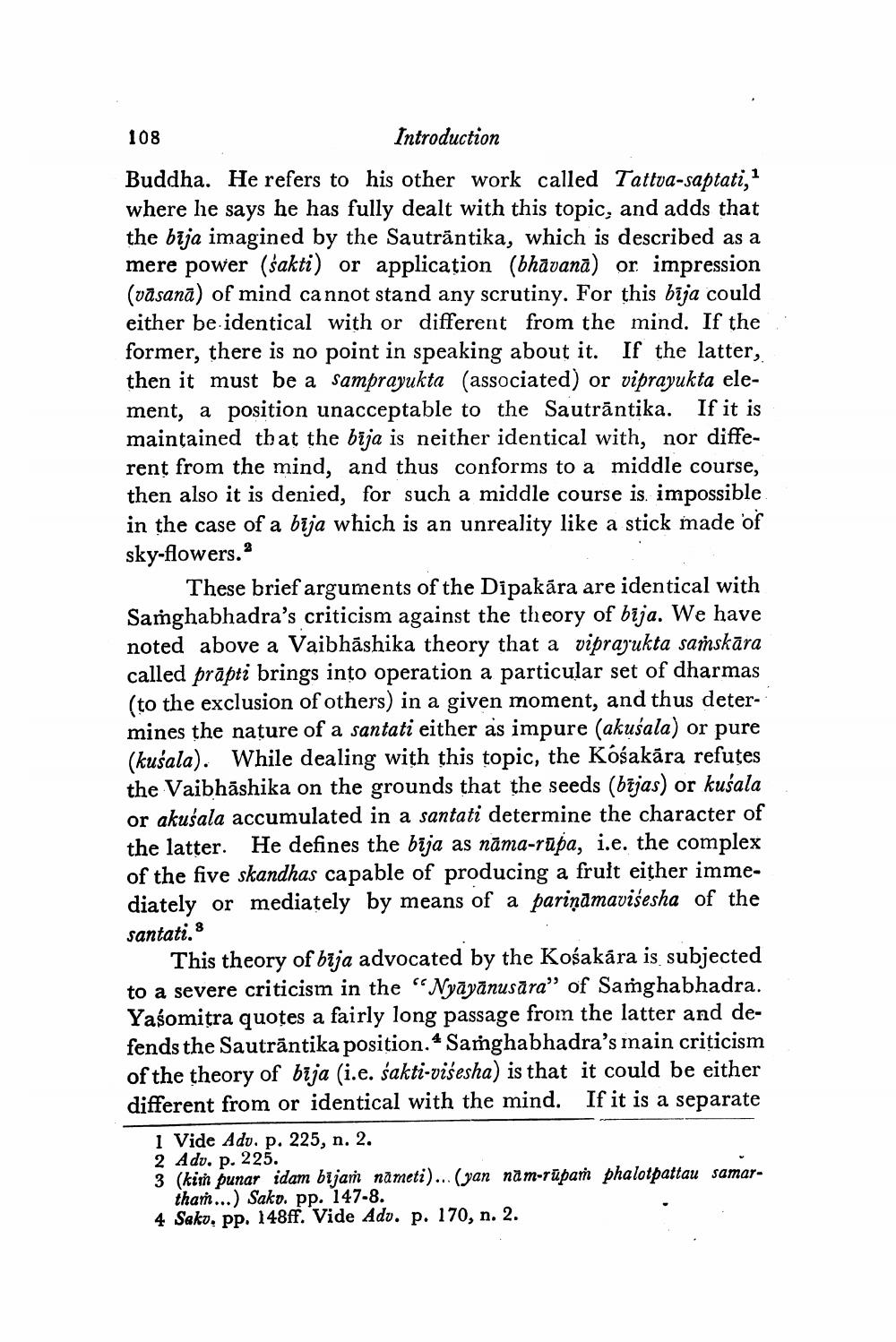________________ 108 Introduction Buddha. He refers to his other work called Tattva-saptati, 1 where he says he has fully dealt with this topic, and adds that the bija imagined by the Sautrantika, which is described as a mere power (sakti) or application (bhavana) or impression (vasana) of mind cannot stand any scrutiny. For this bija could either be identical with or different from the mind. If the former, there is no point in speaking about it. If the latter, then it must be a samprayukta (associated) or viprayukta element, a position unacceptable to the Sautrantika. If it is maintained that the bija is neither identical with, nor different from the mind, and thus conforms to a middle course, then also it is denied, for such a middle course is impossible in the case of a bija which is an unreality like a stick made of sky-flowers. These brief arguments of the Dipakara are identical with Samghabhadra's criticism against the theory of bija. We have noted above a Vaibhashika theory that a viprayukta sanskara called prapti brings into operation a particular set of dharmas (to the exclusion of others) in a given moment, and thus determines the nature of a santati either as impure (akusala) or pure (kusala). While dealing with this topic, the Kosakara refutes the Vaibhashika on the grounds that the seeds (bejas) or kusala or akusala accumulated in a santati determine the character of the latter. He defines the bija as nama-rupa, i.e. the complex of the five skandhas capable of producing a fruft either immediately or mediately by means of a parinamavisesha of the santati, 8 This theory of bija advocated by the Kosakara is subjected to a severe criticism in the "Nyayanusara" of Samghabhadra. Yasomitra quotes a fairly long passage from the latter and defends the Sautrantika position. 4 Samghabhadra's main criticism of the theory of bija (i.e. sakti-visesha) is that it could be either different from or identical with the mind. If it is a separate 1 Vide Adu. p. 225, n. 2. 2 Adv. p. 225. 3 (kim punar idam bijam nameti)... (yan nam-rupam phalotpattau samar tham...) Sako. pp. 147-8. 4 Sako, pp. 148ff. Vide Adv. p. 170, n. 2.




